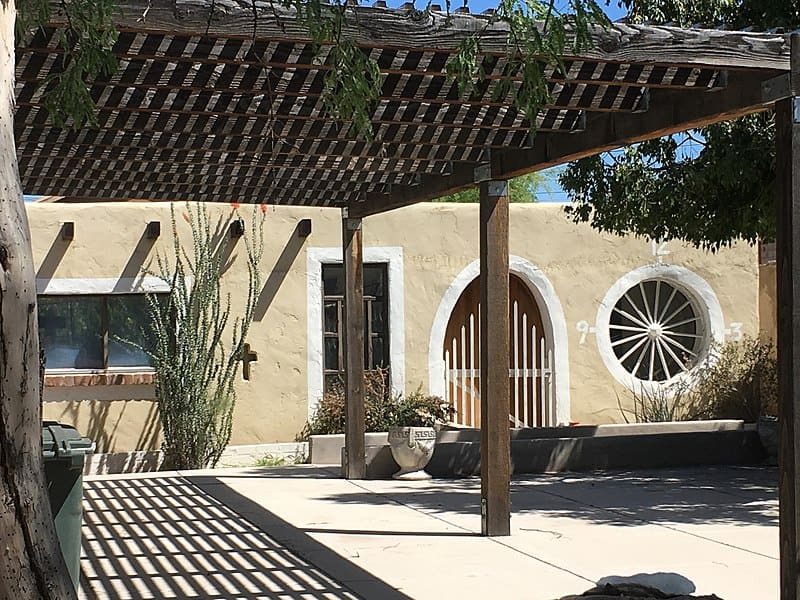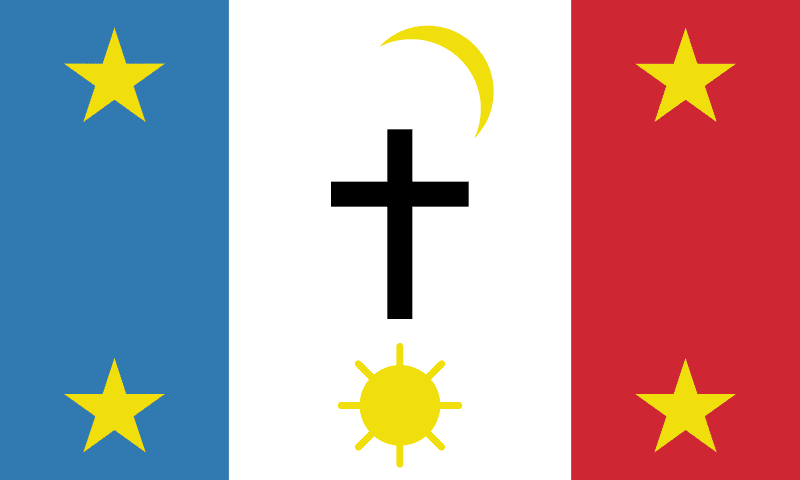The Pascua Yaqui Tribe of Arizona is federally recognized as a Native American tribe. Today, the tribe resides in the southeast region of Arizona near Tucson. They descended from the Yaqui people, who lived along the Yaqui River in northern Mexico and southern Arizona. The Spanish first interacted with the Yaqui people in the 1530s.
At the start, the early Yaqui people were an agricultural tribe, whose territory spanned mostly in northern Mexico. Using bows and arrows to hunt, they also poisoned the tips of their arrows on occasion. Other times, the Yaqui people used clubs to kill small game. The tribe lived in rancherías spread across the territory until in the late 1600s, when Jesuit missionaries settled in the area.
As part of the mission, the Jesuits gathered the Yaquis into larger house communities with a church center. Part of living in a village setting, the Yaqui tribe learned crop planting techniques and animal domestication. The Yaquis kept livestock like pigs and cattle that the Jesuits brought. Though this didn’t completely change the Yaqui way of life, it did impact their culture.
The Jesuits and Yaquis lived in relative peace, until Mexican settlers drove the Jesuits out of the area in 1767, pillaging the area for gold. A new Mexican government was established, and when the government attempted to tax the Yaqui land, violence between the government and Yaqui tribe began.
Thus, warfare and conflict between the Yaqui tribe and the Mexican government continued intermittently until between 1880s and the early 1900s. Refugees fled to the Tucson and the outlying area. There, they formed what is now known as the Pascua Yaqui Tribe of Arizona.
Location
Although the Pascua Yaqui tribe is a federally recognized tribe in Arizona, Arizona wasn’t always the place they called home. As descendants of the Yaquis, they populated the rich flood plains of the Yaqui river, along the Sonora Desert. However, in the early 1900s, because of warfare between the Mexican government and Yaquis, some fled north to Arizona as refugees. For others, the Mexican government deported the Yaqui tribe members north to work on the plantations. Though displaced, the Yaqui people’s common culture and heritage brought them together.
The new tribe of Pascua Yaqui united in the Tucson and Guadalupe areas. However, the big push to be officially recognized came in 1964 when a bill was introduced to Congress to transfer 202 acres of land to the Pascua Yaqui tribe. In 1978, the Pascua Yaqui tribe was federally recognized. In 1994, they were designated as a historic tribe. Today, they reside on a 2,200 acre reservation near Tucson, AZ.

The Antonio Matus House in Tucson, AZ (built
ca.1926) is listed on the U.S. National Register of Historic Places. It serves as a museum and a Yaqui cultural center.
©Ian Poellet, CC BY-SA 4.0 <https://creativecommons.org/licenses/by-sa/4.0>, via Wikimedia Commons – Original / License
Population
There are about 19,000 people in the Pascua Yaqui community, and of that total, only about 4,000 to 5,000 of the tribe members live on the reservation. Of the households that make up the Pascua Yaqui people, the most common demographic is single-mother households, which make up almost 43%. Married couple households make up 23%. And according to the U.S. Census, 12.7% of the total Pascua Yaqui community is non-Indian.
The Pascua Yaqui tribe has five main communities: New Pascua is the Reservation just southwest of Tucson, Old Pascua is in the City of Tucson, Barrio Libre is in the City of South Tucson, Marana is northwest of Tucson, and Guadalupe is a southeast suburb of Phoenix.
Beliefs
In the early 1600s, Jesuit missionaries came to the Yaqui tribe to spread Catholic doctrine. Through the influence of the missionaries, the Yaqui incorporated the Christian doctrine into the established Yaqui beliefs. In short, both Catholic theology and Yaqui ancestral tradition melded into a unified spiritual belief system, which is known as a syncretic religion. The Pascua Yaqui tribe reveres the Creator, Itom Achai, who tribe tradition also identifies as Jesus Christ. Itom Aye is the figure of the Virgin Mary. As you can see, Yaqui and Christian practice intertwines harmoniously for the Pascua Yaqui tribe.
In similar fashion, you can see the melding of these traditions today. The Pascua Yaqui people celebrate Catholic traditions such as “Lent,” which is a period of prayer and fasting before the celebration of Easter. For the Pascua Yaqui tribe, after Lent begins on Ash Wednesday, the processions and weekend ceremonials begin early Saturday morning until Sunday afternoon and last for seven weeks.
But, they also observe “Month of the Return of the Spirits of the Deceased,” which begins the first of October and continues every Monday of the month of October. During this time, the Prayer Leaders and Kantoras (female singers) pray over the spirits of the dead in a local church ceremony.
In this way, the Pascua Yaqui tribe observe both Catholic and Yaqui celebrations.

The flag of the Pascua Yaqui Tribe of AZ combines traditional Yaqui symbolism with a Christian cross.
©Germenfer, Public domain, via Wikimedia Commons – Original / License
Culture
Because of the tribe’s deep Christian roots and Yaqui spirituality, the Pascua Yaqui culture has a strong moral compass. They also have a powerful connection to nature. An iconic symbol of the Pascua Yaqui tribe is the deer dancer. The deer denotes the Yaqui people’s connection with nature. The tribe members believe that when a tribal member dies, a deer will guide them from the earth to the Heavens. To celebrate this, a Pascua Yaqui member will dress as the deer and dance in this ritual act, denoting the tribe’s connection to and reverence for nature.
There Are Five Main Cultural Societies in the Pascua Yaqui Tribe
Teopo Yoemia (Church & Altar Society): When the Jesuit missionaries first visited the Yaqui tribe in the Sonora region in the early 1600s, the missionaries initiated some of the tribe members as priests, known as Yaqui Lay Priests (Maehtom). By training these Maehtoms, the Jesuits ensured that the Maehtoms continually taught the newly adopted Catholic religion. The Jesuits added other traditional roles such as singers, altar keepers, flag bearers, and the like. They incorporated each of these roles into the ceremonies. These roles also merged with the Yaqui ancestral traditions. The current Pascua Yaqui culture continues these traditions.
Matachinim Society (Soldiers of the Virgin Mary): Once an elite warrior group of the original Yaqui tribe, the Jesuit missionaries utilized these warriors to help them attain the Jesuits’ missionary efforts in the Yaqui territories. Thus, the Matachinim Society became Soldiers of God and the Virgin Mary.
Kohtumbre Ya’ura (Lenten Society): A society of only male members, during the 40 days of Lent, this group carries out the customs of both Catholicism and Yaqui tradition to celebrate this holy period.
Wo’i Wiko’o Ya’ura (Coyote Bow Authority): This society is used as security for ceremonies, and is used still today in Rio Yaqui as protection for Tribal Leaders. Although the ritual dances are performed only by men, women serve as leaders and soldiers in this society.
Oficio Achalim (Deer Dancer and Pascola): This society helps Pascua Yaqui people stay connected to their ancestral beliefs. The goal is to pass down the knowledge of those beliefs. Through retelling and re-enactments of tales of the deer, animals, and nature, the Oficio Achalim keep their ancestral beliefs sacred.
Language
The Yaqui language is the official language of the Pascua Yaqui tribe. Before settling in Arizona, the Yaquis were a Cahitan-speaking peoples. Linguistically, they are related to other Sonora tribes such as the Tarahumaras, Opatas, Conchos, Mayos, and other nearby tribes. The Pascua Yaqui tribe believe that the Creator, Itom Achai, gave the Yaqui language as a gift. Thus, it is the primary communication for business and education on the reservation.
Spanish is chiefly used as a second language, and they adopted English as their third language. Spanish and English are useful for transactions outside of the Yaqui community. However, the Pascua Yaqui people promote and preserve the Yaqui language. The Yaqui language ties their culture, tradition, and identity together. To lose the language would be akin to losing part of the Pascua Yaqui culture.
Thank you for reading! Have some feedback for us? Contact the AZ Animals editorial team.







